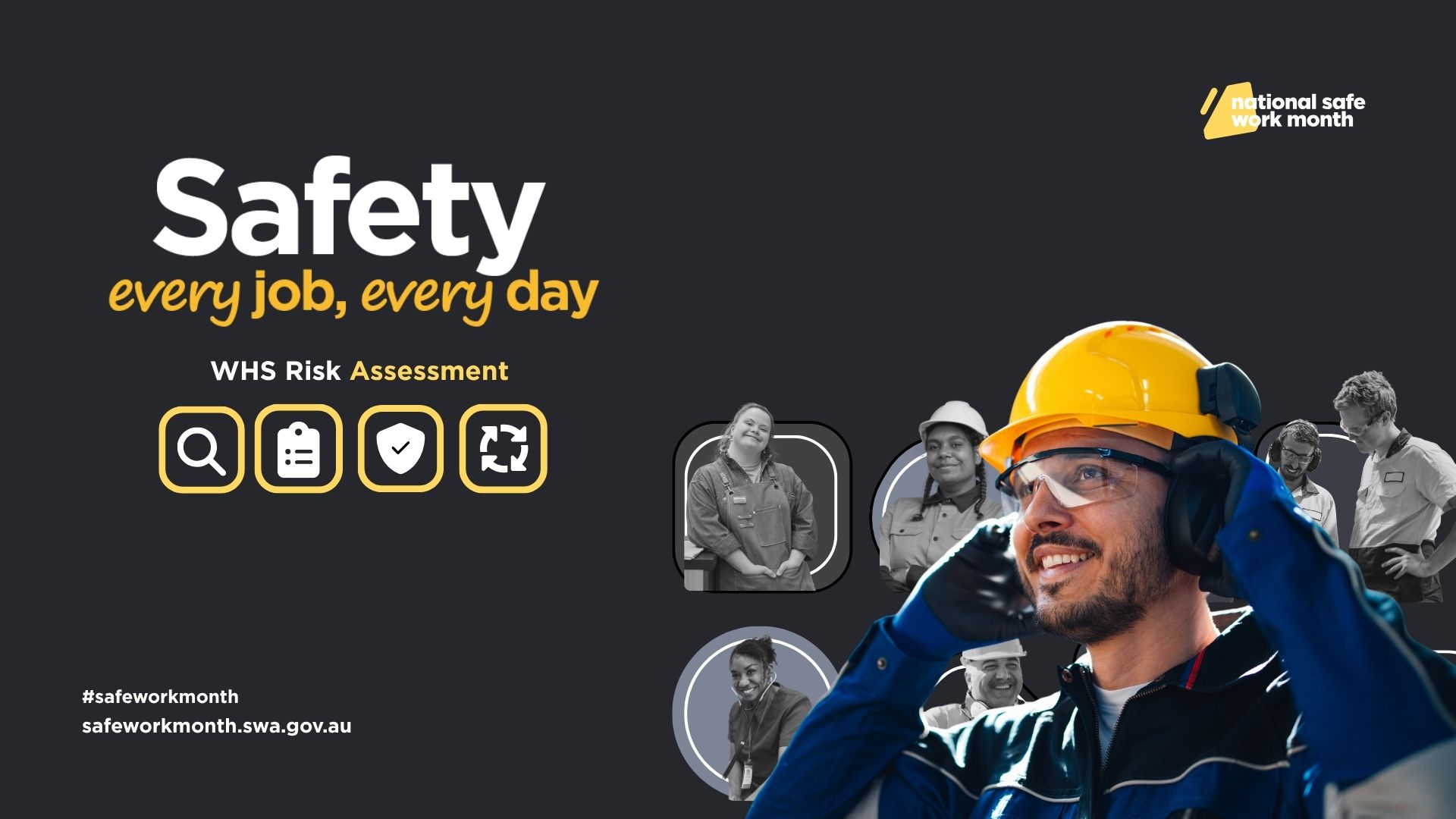How to Implement a Safety Management System
Learn how to implement a Safety Management System to enhance workplace health and safety, ensuring compliance and improving safety performance.



In today’s complex workplace environments, establishing an effective Safety Management System (SMS) is paramount.
An SMS comprises a comprehensive set of policies, procedures, and plans that systematically manage health and safety, crucial for minimising the risk of injury and illness from workplace operations. By implementing an SMS, employers can fulfil their duties under laws such as the Work Health and Safety Act 2011, ensuring compliance with safety regulations while significantly reducing workplace incidents and their associated costs.
This blog will guide you through the steps to develop an SMS tailored to your organisation’s needs, promoting a well-managed and secure work environment for all employees.
1. Planning and Preparation
Implementing an SMS begins with meticulous planning and preparation. This phase is crucial for setting a strong foundation that aligns with both industry-specific requirements and overarching organisational goals.
Assess current safety practices
- Conduct a thorough safety audit to collate existing policies and prepare a general summary of the workplace environment and practices.
- Review past incident reports and understand employee perceptions and behaviours surrounding incidents at work.
- Identify gaps and areas of risk to address, broadly.
Remember, this step is just a preliminary assessment to allow you to categorise and label areas of attention for safety in your workplace - don’t get bogged down in the details just yet.
Set clear safety objectives

With the insights gained from your initial audit, set clear, actionable safety objectives aimed to improve safety outcomes. These should be Specific, Measurable, Achievable, Relevant, and Time-bound (SMART).
For example, a specific and measurable objective could be to reduce workplace injuries by 20% within one year through increasing the frequency of on-site training and updated safety protocols.
Keep the list succinct and manageable. The purpose of this step is to help focus your energy on tangible goals around which you can build your strategy.
Stakeholder engagement

Safety management isn’t a one-person job. It requires the involvement and commitment of all stakeholders, including senior management, safety officers, frontline workers, and even suppliers. Their early involvement ensures broader buy-in and supports the successful roll-out of the SMS.
Align safety strategy with business goals
Align your safety objectives with broader business goals to ensure that they complement each other. This alignment demonstrates the value of safety investments to stakeholders and integrates safety into the core business processes. For example, by installing automated fire suppression systems in your factories, you would not only protect your employees and equipment but also keep production running smoothly during emergencies, showing stakeholders that safety investments directly support business continuity.
Preparation for next steps
With objectives set, stakeholders engaged, and risks codified, create a detailed implementation roadmap. This should outline key actions, timelines, resources required, and metrics for evaluating success. If you followed the SMART method for setting your objectives, this step is made much easier.
2. Customising your Safety Management System
Customisation is key to an effective SMS, just like apparel tailoring is key to a head-turning evening suit or dress. A example of a mature software platform that facilitates this is myosh, with which you can tailor your SMS to meet specific industry needs and seamlessly integrate with other existing systems in the organisation.
Adjust to industry-specific considerations
Adjust your SMS to address unique risks and compliance demands of your industry. For example, myosh hosts specialised modules and settings that you can configure to meet the specific safety challenges and regulatory requirements of sectors like mining, construction, and manufacturing.
As a specific example, if you have a significant fleet of vehicles, make use of a dedicated Vehicle Register module. If you have to keep on top of critical controls, add a Critical Control Management module, with Bow-Tie Analysis.
Implement Control Measures
Once you identify hazards and assess risks, you must implement appropriate control measures to effectively mitigate your unique risks. Select control measures based on the severity and likelihood of the hazard, as they vary.
To learn more about risk control measures, navigate to the article that covers the types and roles of risk control measures in the workplace and goes into detail regarding preventative and reactive measures.
Integration with existing systems
Disconnected systems lead to errors, or worse, discouragement that eventually leads to apathy in the face of unmanageable chaos.
Again, using myosh as an example, you would seamlessly integrate your SMS with your current management systems like HR, enhancing data coherence and operational efficiency. This integration supports a unified approach to managing safety, quality, and environmental compliance, reducing the complexity of handling multiple disparate systems.
Configure the details
A setup where forms and processes that feel relevant and only show you what you need to see has a big impact on minimising the mental load of keeping up with safety responsibilities.
With an SMS implemented on myosh, extensive configurability allows refinement ofevery aspect. Simple examples are custom incident reporting forms that capture relevant data for specific incidents and tailored checklists for regular compliance checks. More granularly, it comes down to creating workflow branches, conditional options, role-based permissions, and many more details.
3. Implementation
Implementing an SMS effectively is critical for its success. The solution you use should come with hands-on training and education tools, phased roll-out options, and advanced integration capabilities.
Develop a communication plan
- Establish communication channels to effectively share SMS policies, updates, and safety information.
- Ensure regular updates and feedback mechanisms are in place to keep all stakeholders engaged and informed.
Implement training programs
- Design and execute training programs tailored to different roles and exposure levels within the organisation.
- With myosh you could utilise the training management module for efficient delivery, tracking, and evaluation of training effectiveness to ensure compliance and understanding.
- Oftentimes, using short, engaging online courses can be a time-effective method for getting everyone up to speed with the essentials. See myosh's standard course library for examples.
4. Monitoring, Auditing, and Continuous Improvement

Effective monitoring, regular audits, and a culture of continuous improvement are essential for maintaining and enhancing your SMS. With myosh, this is facilitated through comprehensive reporting features on a real-time dashboard.
Monitor and review
- Regularly monitor safety performance against the SMS's safety objectives.
- Conduct periodic reviews to assess compliance with safety regulations and the effectiveness of current safety measures.
- Utilise reporting dashboards for ongoing surveillance and quick access to performance metrics, helping identify areas for immediate action.
Continuous improvement
Analysedata and feedback to identify trends and areas needing improvement.- Adapt and refine SMS components based on empirical data and operational insights gathered through myosh.
- Engage stakeholders in a continuous dialogue about how to enhance safety measures, fostering a proactive safety culture.
Documentation and record-keeping
- Maintain comprehensive records of all safety-related activities, including training, audits, incidents, and corrective actions.
- Ensure accessibility and security of safety documentation, which is crucial for internal audits and regulatory compliance.
- Ensure you have reporting tools to generate compliance reports and maintain an audit trail that supports both internal management reviews and external audits. With myosh, regular reports are mailed out to selected staff.
Implement your SMS with myosh today
Implementing an effective SMS is crucial for any organisation committed to maintaining high safety standards and ensuring workplace health and safety.
myosh is safety management software for leaders who prioritise comprehensive and adaptable safety solutions. With features that support every phase from planning to continuous improvement, myosh ensures that organisations not only meet but exceed safety compliance and performance expectations.
Discover how myosh can elevate your safety management—start your free trial with myosh today.
Author
Adrian Manessis
Adrian has been a Director at myosh for 20 years, overseeing the implementation of safety management software in various companies, from small firms to multinational corporations. His roles have included Training, Support, Development, Analysis, Project Management, and Account Management. Adrian’s experience provides him with extensive knowledge of health, safety, environment, and quality management, focusing on industry-specific needs. He also helps integrate the latest industry practices into myosh’s products by building relationships with experts and hosting educational webinars.







